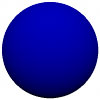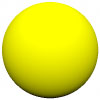Each colour has its own properties with its own wavelength and frequency.
Although white could be said to be a colour, it is generally not included in the scientific spectrum as it is in fact made up of all the colours of the spectrum, but it is often referred to being a colour.
Isaac Newton proved that white light is indeed made up of colours by passing natural sunlight through a glass prism which in result projected a rainbow of colours on a surface.
He then proceeded to use a second glass prism and combined the light from the first prism (which split the suns rays into sperate colours) to produce white light once again. Thus proving white light (ie the sun) contains colour.
The tables below show each colour and its relative property.
Key:
Frequency = Terahertz (one trillion cycles per second)
Wavelength = Nanometers
One meter equals 1,000,000,000 nanometers. One nanometer is about the length of ten atoms in a row.
Complementary colour = the complementary colour associated with each colour
Figures shown here are approximate
| Violet | ||
|---|---|---|
 | Wavelength | 425 - 400 nm |
| Frequency | 700 - 790 thz | |
| Complementary colour | Yellow | |
| Indigo | ||
|---|---|---|
 | Wavelength | 450 - 425 nm |
| Frequency | 670 - 700 thz | |
| Complementary colour | Orange | |
| Blue | ||
|---|---|---|
 | Wavelength | 500 - 450 nm |
| Frequency | 670 - 600 thz | |
| Complementary colour | Red | |
| Green | ||
|---|---|---|
 | Wavelength | 570 - 500 nm |
| Frequency | 580 - 530 thz | |
| Complementary colour | Red | |
| Yellow | ||
|---|---|---|
 | Wavelength | 590 - 570 nm |
| Frequency | 530 - 510 thz | |
| Complementary colour | Violet | |
| Orange | ||
|---|---|---|
 | Wavelength | 610 - 590 nm |
| Frequency | 510 - 480 thz | |
| Complementary colour | Indigo | |
| Red | ||
|---|---|---|
 | Wavelength | 750 - 610 nm |
| Frequency | 480 - 405 thz | |
| Complementary colour | Blue | |
